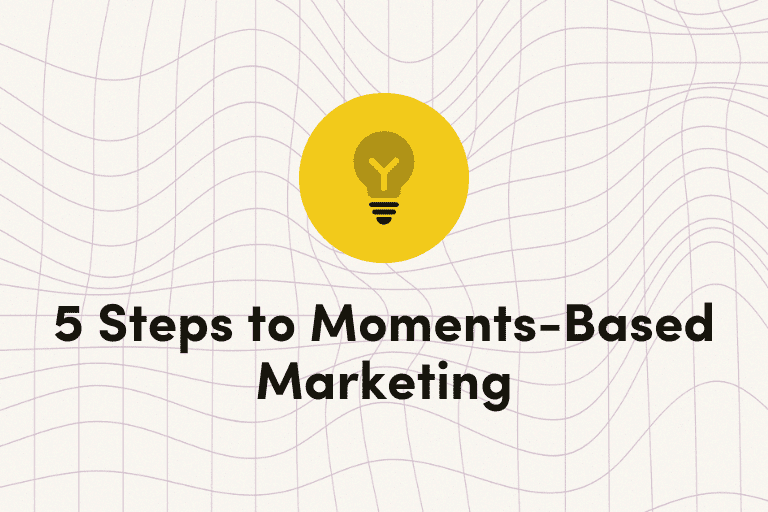What is a Customer Data Platform (CDP)?
A customer data platform (CDP) is a technology solution that aggregates and centralizes all of your customer information from the different sources you use to gather and store data.
A CDP compiles data into a unified customer profile, consolidating and removing duplicate information, to align all of your content within a structured framework. These customer profiles can then be used to facilitate your marketing efforts, ensuring that your marketing teams and solutions have the most current and cohesive data available to help them engage your customers, analyze their behavior, and, ultimately, convert them.
Let’s look at what goes into a customer data platform, and how it functions.
What’s in a Customer Data Platform?
A customer data platform typically includes first- and zero-party customer data from a number of different solutions within your marketing technology stack. This includes your CRM, e-commerce platform, POS system, and web and app analytics in addition to a combination of demographic, transactional, and behavioral data.
The demographic data might include fields such as:
- Name
- Address
- Region
- Preferred language
- Time zone
- Birthdate
- Household size
- Income
- Job function
- Company
Transactional data, which is gathered from your e-commerce and POS platforms, could include:
- Purchases (specific items and categories)
- Returns
- Purchase/return dates
- Average order volume
- Total lifetime value
And finally, behavioral data is largely pulled from your analytics tools, including website and app analytics, email marketing, and SMS marketing analytics solutions. It might include data such as:
- Date of first brand interaction
- Date of last brand interaction
- Website visits
- App interactions
- Email opens and clicks
- SMS opens and clicks
All of this data, and more, can be integrated to form a holistic picture of each customer that can be used to deliver best-in-class marketing strategies. The platform can integrate both historic and real-time customer data, allowing you to act on real-time customer events immediately.
GDPR and other data privacy regulations make it essential to carefully track what information you’ve received about each customer, how you’ve received it, and what permissions they’ve granted you. By using an integrated system for managing your customer profiles, you can securely maintain accurate records for each customer that ensure compliance with their contact and data-sharing permissions.
How to Use a Customer Data Platform
Your customer data platform should act as a single source of truth (SSOT) for your entire marketing organization, giving them access to the most current profile of any customer in your database, as well as anonymous browsers who have not yet converted.
The platform should be intuitive enough that your marketing team can independently make queries and analyze the data, eliminating the need to make requests from your IT or dev teams. Your marketing team should also have the ability to segment your customer base so precisely that they can develop personalized campaigns on a per-user basis.
For example, beyond segmenting new vs. returning users, you can segment your returning visitors according to the products they’ve purchased. When developing marketing campaigns for these users, you can incorporate dynamic content fields that pull from your catalog and promote products similar to the ones that they’ve previously purchased.
Because your customer data platform incorporates real-time data as well as historic data, you’ll also be able to trigger new campaigns based on real-time user events, such as a website visit or cart abandonment. These campaigns can also include content that reflects the needs and preferences of the individual user. For instance, if a customer has viewed a hotel on your website, you can launch an immediate follow-up campaign that encourages them to complete their booking, reminds them of their progress in your loyalty program, and lets them know about similar hotel deals available in the same area.
Using a Customer Data Platform for Cross-Channel Marketing
Cross-channel marketing is a highly effective tactic for engaging your audience because you’re able to customize not only the content you send them, but also how you deliver it, based on their preferences and use cases.
For instance, one customer may typically open your marketing messages via your email campaigns, but if they are browsing products in your app, it makes sense to shift your marketing approach to in-app or push notifications to reach them in real-time. You’ll then have a record of how they responded. If they clicked on your promotion, but didn’t make a purchase, you might later follow up via email that builds upon the ones they previously received.
Your customer data platform can be instrumental in centralizing all of your cross-channel marketing data, including that from email, social, SMS, in-app messaging, push notifications, and direct mail. By instantly updating new information within your CDP, you’ll be able to eliminate redundancies and ensure that your customers are receiving consistent messages that relate back to previous communications and customer interactions across all of your marketing channels.
Using a sophisticated cross-channel marketing platform like Iterable will help you tie in your customer data platform and marketing automation solution all in one place. This allows you to build deeply segmented marketing campaigns that are personalized on a user-by-user level, incorporating relevant content and distributing it across the marketing channels each user is most likely to engage with.
With a customer data platform, you’ll have all the data insights you need to segment, manage, and analyze your customer list, so that you can develop more impactful marketing strategies and make smart, data-driven business decisions.































